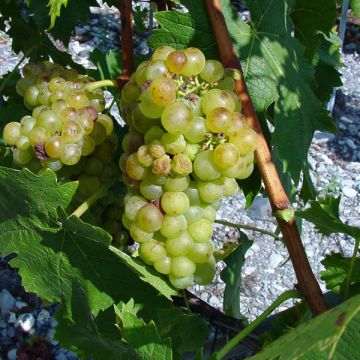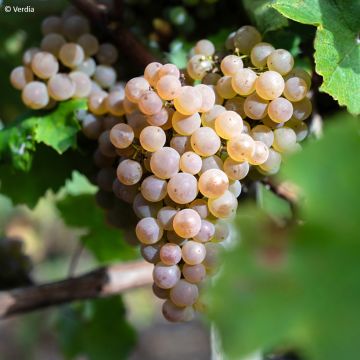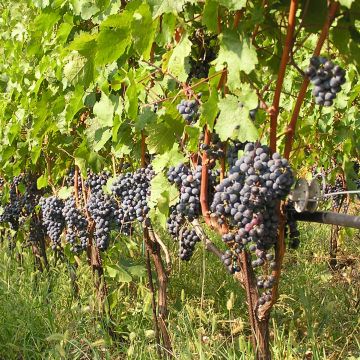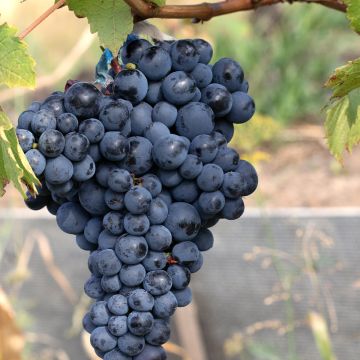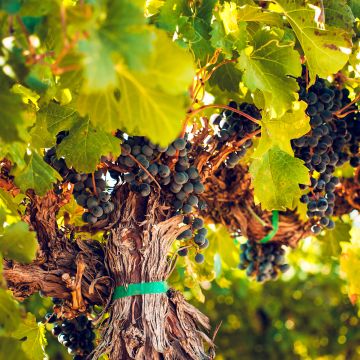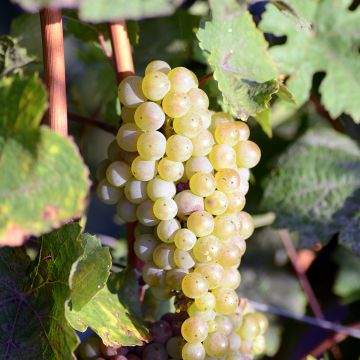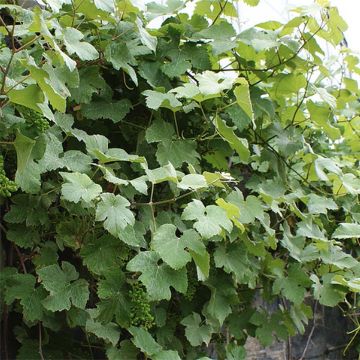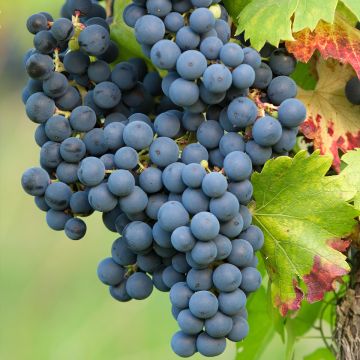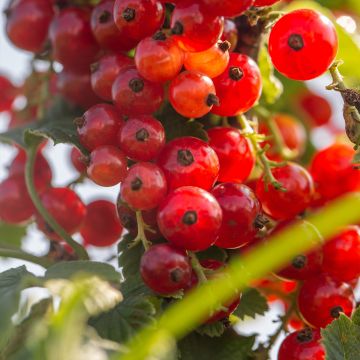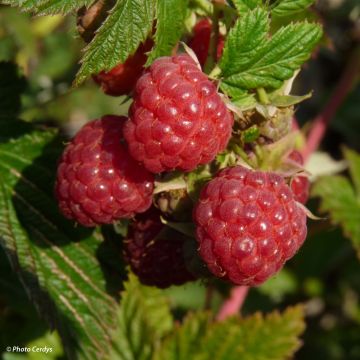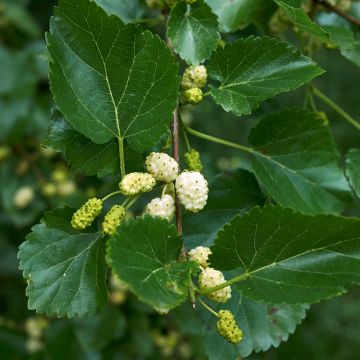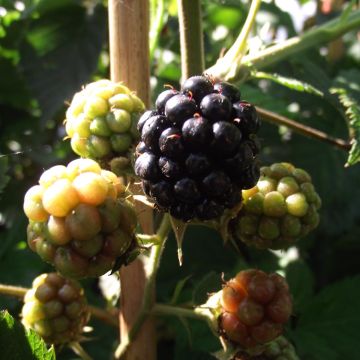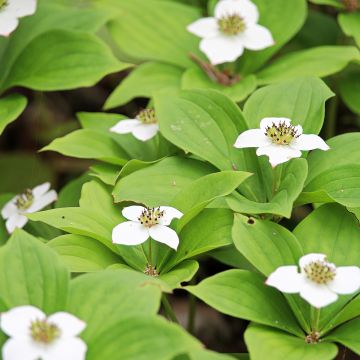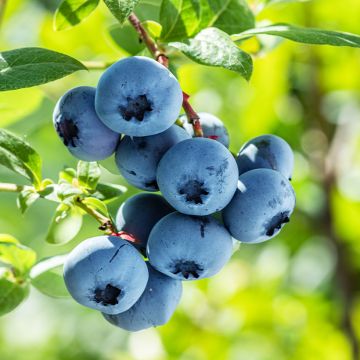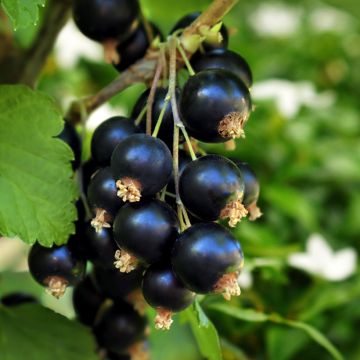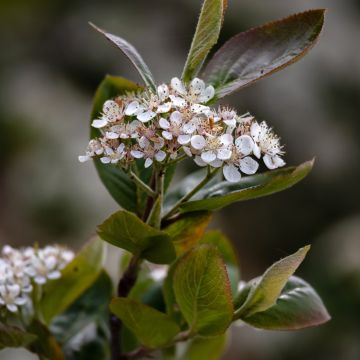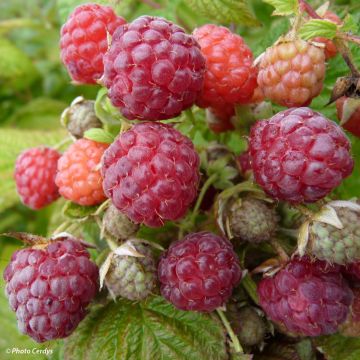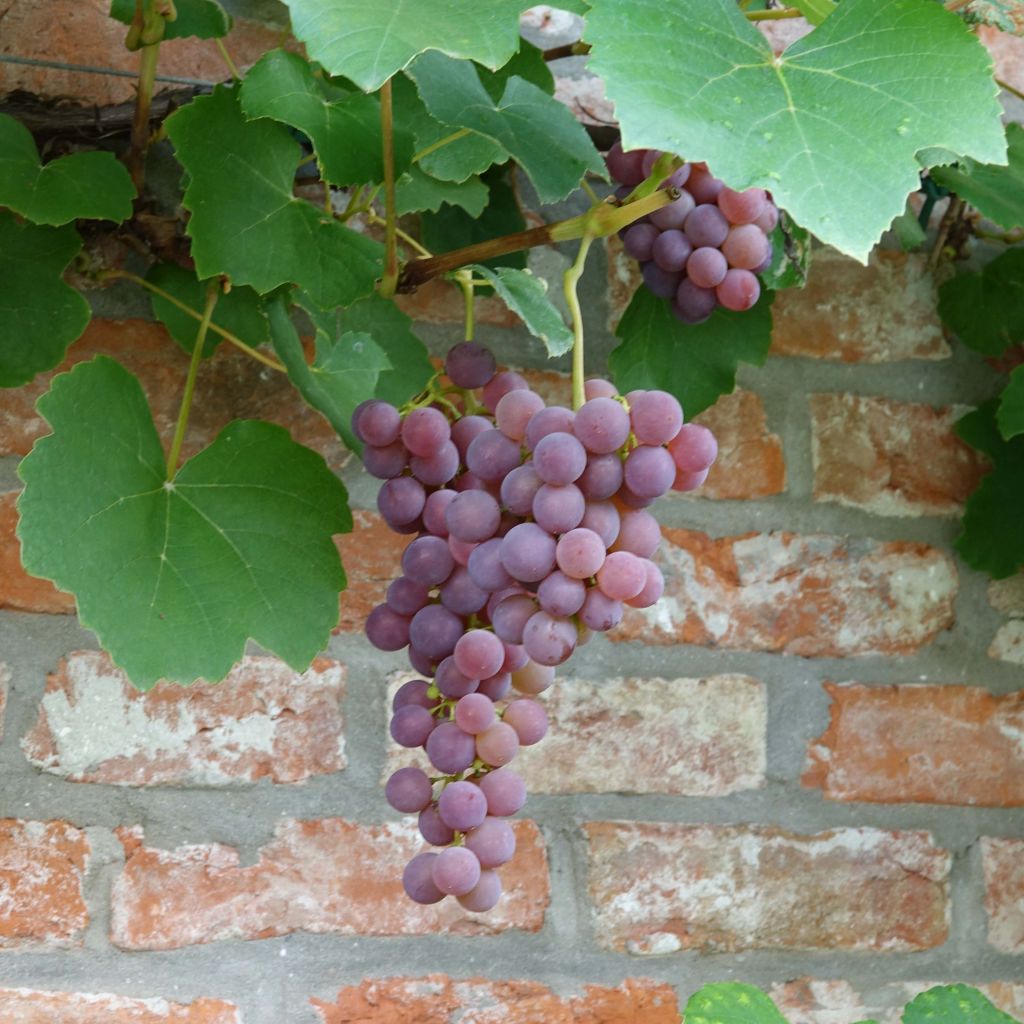

Vitis Fragola Nera - Strawberry vine
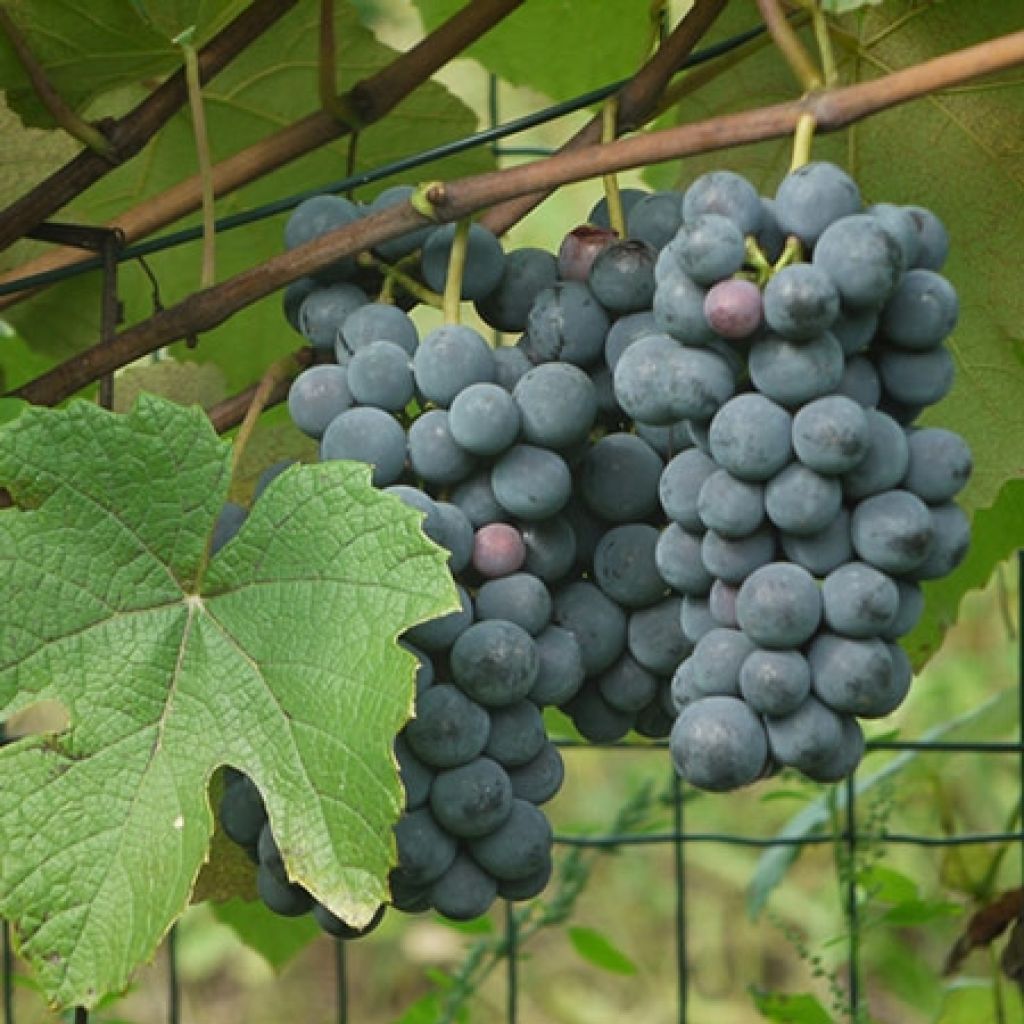

Vitis Fragola Nera - Strawberry vine
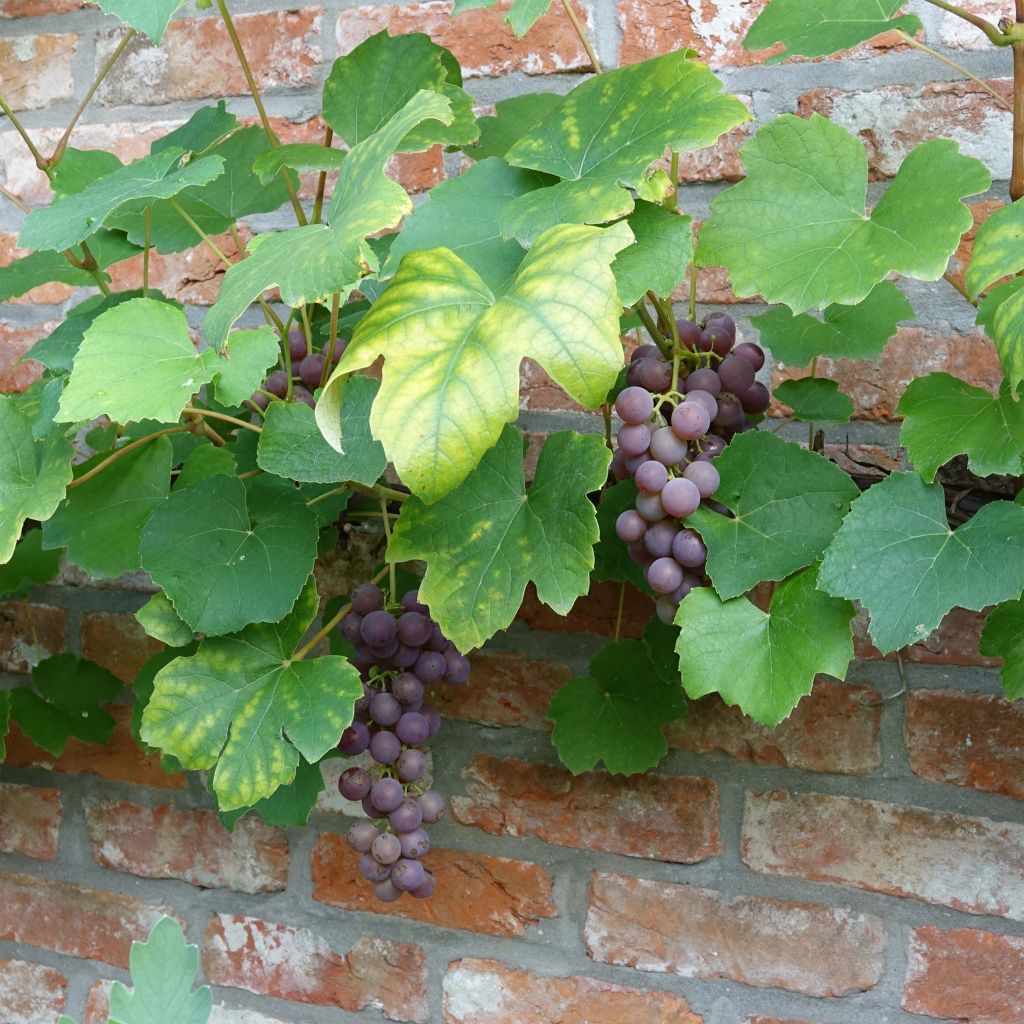

Vitis Fragola Nera - Strawberry vine
Vitis Fragola Nera - Strawberry vine
Vitis labrusca x vinifera Fragola Nera
Cayuga White, Seyval Blanc, Grape vine
This item cannot be shipped to the selected country
Oversize package delivery charge from €6.90
Delivery to Corse prohibited
More information
Schedule delivery date,
and select date in basket
This plant carries a 6 months recovery warranty
More information
We guarantee the quality of our plants for a full growing cycle, and will replace at our expense any plant that fails to recover under normal climatic and planting conditions.
Oversize package: home delivery by special carrier from €6.90 per order..
Express home delivery from €8.90.
Delivery to Corse prohibited: UE law prohibits the import of this plant from mainland France to Corse as part of the fight against Xylella fastidiosa. Please accept our sincere apologies.
More information

Does this plant fit my garden?
Set up your Plantfit profile →
Description
This amazing 'Fragola Nera' vine, perhaps better known as 'Isabella' or 'Odess', is an ancient hybrid variety that produces beautiful clusters of black grapes, whose pulp has an aromatic and flavourful taste that is reminiscent of wild strawberries. Its medium-sized grapes can be eaten as is, juiced, or made into jams. The harvest takes place, depending on the region, the year, and the climate, from mid-September to October. This productive vine, which is resistant to diseases, requires little maintenance while promising many gustatory and aesthetic pleasures. It can be grown in the garden, on a pergola, in a container, or trained against a wall.
'Fragola Nera' is a hybrid with uncertain origins, likely resulting from a spontaneous cross-breeding that took place in the United States during the trials of European grape varieties. It seems that the arrival of phylloxera, which decimated the European vineyards at the end of the 19th century, can be attributed to this vine, which was in turn imported to the old continent. Its first parent is undoubtedly Vitis labrusca, a species native to the eastern North America. It passed on its natural resistance to phylloxera, which parasitises the roots of European vines. The grapes of 'Fragola Nera' also inherited the thick skin of this parent, with a particular flavour (strong and earthy aromas) that easily separates from the pulp. Its second parent is an unknown variety of Vitis vinifera, cultivated since ancient times in Europe, the Middle East, and North Africa. All these plants belong to the Vitaceae family.
The Vitis 'Fragola Nera' is a sarmentous and climbing bush, with serpentine stems equipped with tendrils that can exceed 5 metres (16 feet) in length over time. It forms a trunk, often nodose and twisted, covered with fibrous and brown bark that flakes off in strips as it ages. Its long green stems bear beautiful round-shaped leaves, with serrated edges, of medium green colour, turning yellow before falling in autumn. It blooms in late spring, from May to June depending on the region, in the form of dense and well-formed clusters, pyramid-shaped to cylindrical, loaded with tiny green flowers. After pollination by insects, the berries we call grapes form. Under their dark purple, thick, and pruinose skin, the pale green flesh, low in seeds, juicy and sweet, reveals a surprising aroma of wild strawberries. They can be consumed as table grapes or used for winemaking. This variety is very hardy and easy to grow in any well-drained garden soil, but not limestone. It is pruned in late winter, after the frost, above 3 buds to promote the formation of new shoots that will flower.
Planted in the sun, the 'Fragola Nera' vine will be very decorative along a wall, on a pergola, in the ground, or in a large container on a terrace. This grape variety is also widely used for garden ornamentation, thanks to its decorative foliage. In Switzerland, it is distilled to make 'grappa tessinoise'. Despite its atypical, slightly 'earthy' flavour it is consumed as a table grape.
Report an error about the product description
Vitis Fragola Nera - Strawberry vine in pictures
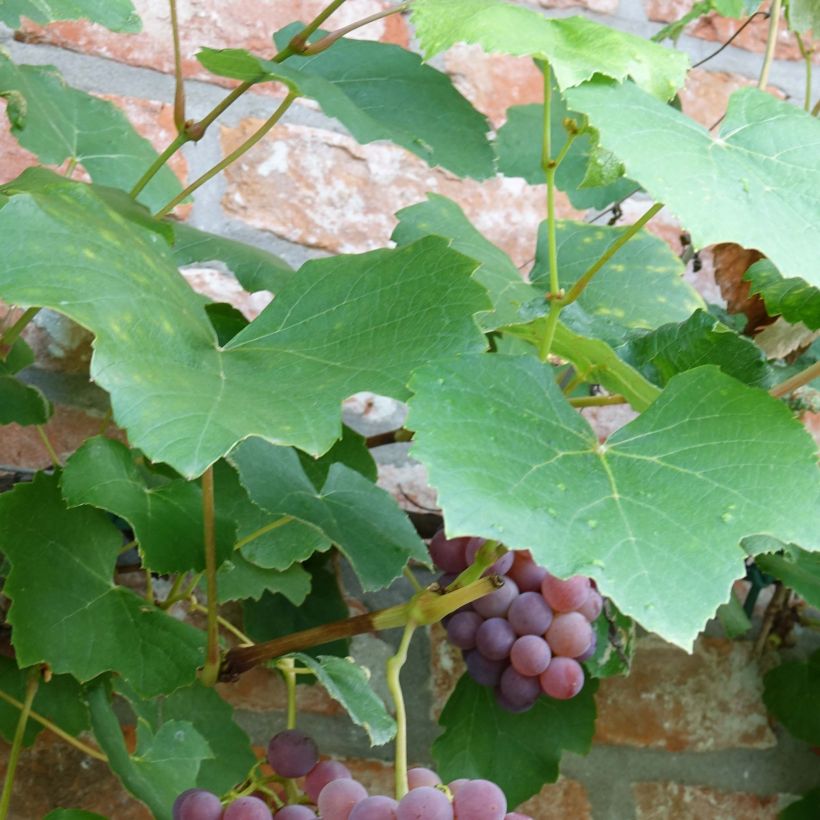

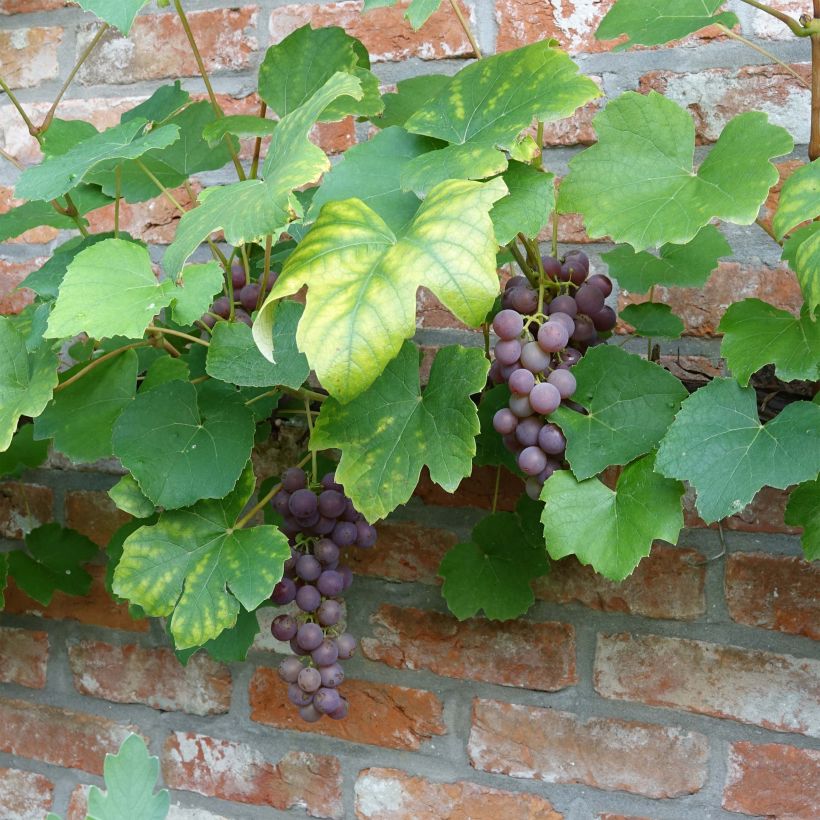

Plant habit
Flowering
Foliage
Botanical data
Vitis
labrusca x vinifera
Fragola Nera
Vitaceae
Cayuga White, Seyval Blanc, Grape vine
Cultivar or hybrid
Other Grapevines
Planting and care
The 'Fragola Nera' Vine should be planted in a well-drained, neutral or acidic soil (unlike European vines, which prefer limestone), preferably moist, that you have enriched with an organic fertiliser. Once well established, the vine withstands summer drought quite well. Choose a sunny exposure, possibly partial shade in the Mediterranean (southeast exposure). It can tolerate temperatures as low as -20°C (-4°F). Prune it in February-March, after the frost, leaving 2 or 3 buds on the secondary shoots. Prune it again once the berries have formed on the clusters, leaving 2 or 3 leaves above each cluster (this allows the sun to reach the fruits and the sap to nourish them more efficiently). Once the framework of your trellis is formed, remove the shoots that have produced fruits every year. Stake or train to support and guide the shoots. Train it against a wall to benefit directly from the grapes. Mildew and powdery mildew are common (especially in rainy climates), which is why it is advisable to treat the vine in spring and during summer with Bordeaux mixture and/or sulfur powder. This vine may take a season to establish well, during which it will grow moderately. Its woody climbing stems will then gain several metres per year and will require pruning.
Planting period
Intended location
Care
-
, onOrder confirmed
Reply from on Promesse de fleurs
Berries
Haven't found what you were looking for?
Hardiness is the lowest winter temperature a plant can endure without suffering serious damage or even dying. However, hardiness is affected by location (a sheltered area, such as a patio), protection (winter cover) and soil type (hardiness is improved by well-drained soil).

Photo Sharing Terms & Conditions
In order to encourage gardeners to interact and share their experiences, Promesse de fleurs offers various media enabling content to be uploaded onto its Site - in particular via the ‘Photo sharing’ module.
The User agrees to refrain from:
- Posting any content that is illegal, prejudicial, insulting, racist, inciteful to hatred, revisionist, contrary to public decency, that infringes on privacy or on the privacy rights of third parties, in particular the publicity rights of persons and goods, intellectual property rights, or the right to privacy.
- Submitting content on behalf of a third party;
- Impersonate the identity of a third party and/or publish any personal information about a third party;
In general, the User undertakes to refrain from any unethical behaviour.
All Content (in particular text, comments, files, images, photos, videos, creative works, etc.), which may be subject to property or intellectual property rights, image or other private rights, shall remain the property of the User, subject to the limited rights granted by the terms of the licence granted by Promesse de fleurs as stated below. Users are at liberty to publish or not to publish such Content on the Site, notably via the ‘Photo Sharing’ facility, and accept that this Content shall be made public and freely accessible, notably on the Internet.
Users further acknowledge, undertake to have ,and guarantee that they hold all necessary rights and permissions to publish such material on the Site, in particular with regard to the legislation in force pertaining to any privacy, property, intellectual property, image, or contractual rights, or rights of any other nature. By publishing such Content on the Site, Users acknowledge accepting full liability as publishers of the Content within the meaning of the law, and grant Promesse de fleurs, free of charge, an inclusive, worldwide licence for the said Content for the entire duration of its publication, including all reproduction, representation, up/downloading, displaying, performing, transmission, and storage rights.
Users also grant permission for their name to be linked to the Content and accept that this link may not always be made available.
By engaging in posting material, Users consent to their Content becoming automatically accessible on the Internet, in particular on other sites and/or blogs and/or web pages of the Promesse de fleurs site, including in particular social pages and the Promesse de fleurs catalogue.
Users may secure the removal of entrusted content free of charge by issuing a simple request via our contact form.
The flowering period indicated on our website applies to countries and regions located in USDA zone 8 (France, the United Kingdom, Ireland, the Netherlands, etc.)
It will vary according to where you live:
- In zones 9 to 10 (Italy, Spain, Greece, etc.), flowering will occur about 2 to 4 weeks earlier.
- In zones 6 to 7 (Germany, Poland, Slovenia, and lower mountainous regions), flowering will be delayed by 2 to 3 weeks.
- In zone 5 (Central Europe, Scandinavia), blooming will be delayed by 3 to 5 weeks.
In temperate climates, pruning of spring-flowering shrubs (forsythia, spireas, etc.) should be done just after flowering.
Pruning of summer-flowering shrubs (Indian Lilac, Perovskia, etc.) can be done in winter or spring.
In cold regions as well as with frost-sensitive plants, avoid pruning too early when severe frosts may still occur.
The planting period indicated on our website applies to countries and regions located in USDA zone 8 (France, United Kingdom, Ireland, Netherlands).
It will vary according to where you live:
- In Mediterranean zones (Marseille, Madrid, Milan, etc.), autumn and winter are the best planting periods.
- In continental zones (Strasbourg, Munich, Vienna, etc.), delay planting by 2 to 3 weeks in spring and bring it forward by 2 to 4 weeks in autumn.
- In mountainous regions (the Alps, Pyrenees, Carpathians, etc.), it is best to plant in late spring (May-June) or late summer (August-September).
The harvesting period indicated on our website applies to countries and regions in USDA zone 8 (France, England, Ireland, the Netherlands).
In colder areas (Scandinavia, Poland, Austria...) fruit and vegetable harvests are likely to be delayed by 3-4 weeks.
In warmer areas (Italy, Spain, Greece, etc.), harvesting will probably take place earlier, depending on weather conditions.
The sowing periods indicated on our website apply to countries and regions within USDA Zone 8 (France, UK, Ireland, Netherlands).
In colder areas (Scandinavia, Poland, Austria...), delay any outdoor sowing by 3-4 weeks, or sow under glass.
In warmer climes (Italy, Spain, Greece, etc.), bring outdoor sowing forward by a few weeks.

































